An update on Eyeup’s most popular blog of 2022
How to update your Operations Manual 2023!
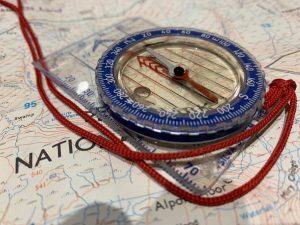
Edits
24/12/2023 Type “bear” to “bare”
30/09/2023 Add links to Eyeup PDRA01 Gateway form
23/09/2023 Typo corrected in EP example.
18/09/2023 Section 3, Compliance Statement changed.
31/08/2023: Amended section numbering and added link to Osprey Drone Training video.
14/07/2023: Previous link to the CAA’s version of the ANO appears to have been removed from the CAA site. The link here now takes you directly to the UK Government legislation site.
27/02/2023: Updated NOTAM Portal link.
14/02/2023: Added “Everything Else” Step 12.
This blog takes time to write and time to keep updated as we learn more about the CAA’s approach to assessing manuals.
So here’s the deal which is in two parts. Use the blog and if it helps you through the update process, please remember the work I’ve put in and see your way to buying me a coffee
Making life easier
Eyeup has now created a fully CAP 722A and 722H compliant manual. If you want to have your complete manual refreshed to this document, then it’s easy to do.
Simply click here, complete the form and email your current manual to info@eyeup.camera. You will be invoiced (£150.00 Eyeup is not registered for VAT) and once paid, you will be sent an updated manual. It is important that you familiarise yourself fully with this new manual since it contains some differences to your current OM, driven by the recently released CAP 722H version 2 (as of 4th August 2023).
First… a note of caution
If you are determined to update your own manual, then all you need is covered below. However, be warned that updates since 2023 are not for the faint-hearted. There is a lot of detail, so be prepared for a long session to get it right. If you follow the suggestions below, your manual will end up pretty compliant with CAP 722H. How compliant will depend on the quality of the manual you started with. Your manual is unlikely to be compliant with CAP 722A however. At the moment, this doesn’t appear to be a problem, but we don’t know when or if the CAA will ask the shared services section to clamp down and request that all manuals should comply with both the format and content of CAP 722A.
Old News
This is the third version of the “Update your Ops Manual” blog. There can be value in checking previous versions of the blog…if only to understand the type and scope of regulatory changes the industry experiences.
Previous versions can be found here for 2022 version and here for the 2021 version
However, I would advise you NOT to go poking around these previous versions unless you are confident that you understand the regulatory structure and how it has changed as you may thoroughly confuse yourself!
I have a couple of other pages which may help you develop or improve your current processes. These can be used to tidy or improve your ops manual.
Drone Operations Manuals Tips and Tricks
Emergency Procedures
Harder
The headline is that amendments in 2023 are a bit more involved than last year’s changes. This is due to the somewhat messy release of CAP722H. This year I’m going to try to cut out the wordiness. However, we do need to start with a short but critically important explanation of a MAJOR change in approach to safety which is being driven forward by the CAA this year.
If you want to catch some items that may not be covered by this years changes (but which may have dropped out of your manual over the years), or need to respond to a CAA “hold” notice, then I also recommend a look at Osprey Drone Training’s “How to Update your CAA Drone Operations Manual” on that YouTube.
The “bubble” HAS burst
Since 2016 (I remember because it happened following the amendment to the Air Navigation Order 2009 to the ANO 2016), operators have been taught by many training organisations that overflight under the law is fine. To a certain extent it has been. However, with the introduction of the EASA-based regulations at the end of 2020. the CAA and UK government have suddenly realised that they are no longer part of a bigger European organisation. The responsibility for any UAS Incidents which occur on UK soil, stays on UK soil, be that with the CAA, the DfT of the Secretary of State for Transport. There are also certain clauses within the UAS Implementing Regulation that effectively bind the hands of the CAA in terms of what they let your do under a PDRA01 authorisation. Remember that although the remote pilot is responsible for the safety of the flight, this takes place within a permission (and associated risk assessment) that allows the pilot to do certain things. If the pilot is flying in accordance that risk assessment, and there is an accident, then there may be a liability that sits beyond the pilot and on the shoulders of the organisation that produced the risk assessment. That organisation is the CAA.
From 31st January 2023, the CAA has asked the RAEs specifically NOT to teach that there is a bubble. Instead, they want operators to fully appreciate the risks of flying in congested areas and to avoid overflight wherever possible. Where a pilot does overfly, then it is assumed that they have understood those risks and have taken on the responsibility themselves. There is no finger-pointing back at the CAA or claiming that your were just following the PDRA01 risk assessment.
So if you haven’t received the very latest training then you need to understand that the RA contained in CAP722H is more risk averse than you may be used to.
No Overflight
When planning and carrying out your flights, there is now an assumption that you will not overfly uninvolved people. This doesn’t mean that you are limited to a 50m “cylinder” or “Column” around your drone. It just means that you need to plan your flight so that in the (admittedly unlikely) event of a full system failure, that your drone will be even more unlikely to actually be in a position to impact any person below it.
To directly quote the wording provided to the RAEs:
“Any overflight of uninvolved persons must be kept to a minimum, and the remote pilot shall reduce as much as possible the time during which the unmanned aircraft overflies those persons.”
So, according to the CAA, what is overflight? It’s not often you’ll see a specific definition of the term but essentially it is defined as having the UA in a position where a reasonable person would say it was “directly above” or “overhead”. Of course,
You can update your manual yourself
The information below assumes that either you or the CAA have picked up on various inaccuracies that they have been trying to weed out over the years. Occasionally they will miss stuff and if you haven’t picked up on it you will get your renewal put on hold. Don’t stress about this, just make the change the CAA is requesting and ping back an updated version of your manual. I have never known them charge the £124 “fine” for corrections where an operator has made an effort to update their document.
Be aware that this blog isn’t necessarily kept up-to-date and it is your responsibility to get your manual updated correctly. Failure to do so may indicate a lack of understanding of your own manual and leave you vulnerable in the event of a CAA audit. Don’t say you haven’t been warned. Sub-contracting this element of your business and not understanding your manual is your responsibility and yours only.
If you are in any doubt as to what should be in your manual, check out CAP722A which provides the CAA template.
So let’s move swiftly into the ten steps to Ops Manual Heaven!
Step 1 Amendment Record
Whatever you change, make a note of it in your amendment record. This will be near the beginning of your manual. The date of amendments and amendment number should match those on the front cover.
Top tip: Remove issue numbers and dates from headers and footers of your documents. They just leave you with more places to update every time. Golden rule with key information is to have it in the correct place only…and only once to save you having to catch it at multiple locations.
Step 2 Update your Document Reference Table
I won’t give the document dates and issue numbers here because they are subject to constant change. This is just the method to use to find the latest versions/dates to pop into your table against each document.
What you need to do here is input the current document name (e.g. CAA CAP1789A) into a browser search and click on the CAA link that comes up. Here’s an example:
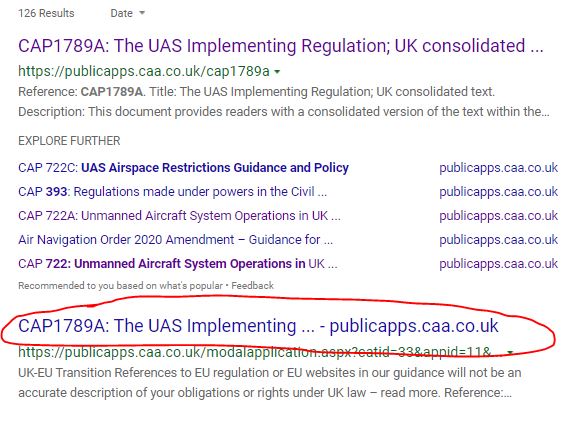
The link you want should be pretty obvious so click on it. It should take you to a page like this where the latest version and date will be obvious. These should be used in your reference table.
Here’s another tip. If the version has changed, click into the document and take a look at the changes. Who knows, they may directly impact your operations. Document amendments will generally be outlined in the first few pages of the document.
It’s a good idea to copy the document web address from your browser and create a link within your document. This will help you access the source document when you need to.
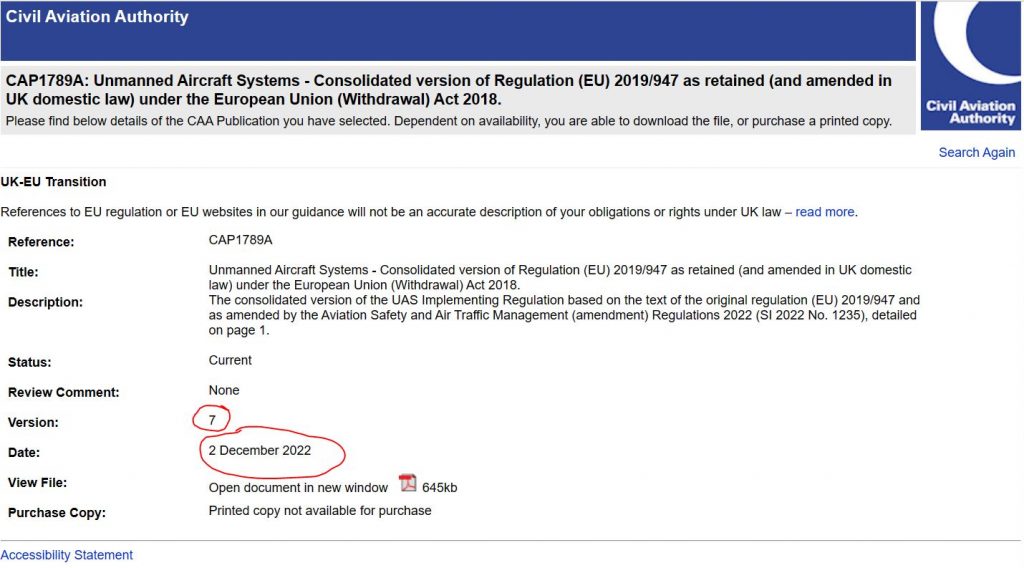
Here are the documents I reference in my standard manual. I have also added what I understand the CAA to require as part of the CAP722H changes:
A bit of a revision is needed if you refer to the old CAP2038A00 to locate the Air Navigation Order 2016. On 29th April 2022 the CAA removed the old CAP and replaced it with a link to the Air Navigation Order 2016 as amended by the Air Navigation (Amendment) Order 2022. The latest amendments don’t appear to impact UAS operations and are concentrated on airworthiness and interpretation of EU regulations.
Until advised otherwise, I will be referring to it as the “Air Navigation Order 2016 as amended”.
UAS Regulation EU 2019/947 Consolidated Regulation, Acceptable Means of Compliance, Guidance Material and Certification Specifications to UK Regulation (EU) 2019/947 (as amended)
CAP722 UAS Operations in UK Airspace – Guidance
CAP722D UAS Operations in UK Airspace – Master Glossary and Abbreviations
CAP722H Specific Category Operations: Pre-defined Risk Assessment Requirements, Guidance & Policy
CAP1496 New Aviation Reporting Portal
You may have reference to CAP382 Occurrence reporting Scheme. Feel free to leave this in. However, if you click through to CAP1496 you will find in paragraph 2 a link to the CAA CAP382 occurrence reporting page, so CAP1496 covers all the bases and I tend to delete it. No kickback yet.
Step 3 Compliance Statement
All Operations Manuals submitted with applications are required to be updated to refer to the new UAS regulations. This is so that the CAA knows the operator is familiar with the new regulations.
Edit: Updated 18/09/2023 following advice from Justin Glynn of Osprey Drone Training. This was received by Justin direct from the CAA as a response to an operations manual which would previously have been acceptable. Yes, they moved the goalposts again without telling anybody. Check Justin out for your GVC training before the end of December 2023.
“All operations will be carried out in accordance with the issued Operational Authorisation PDRA-01 and abide by the requirements of UAS Implementing Regulation 2019/947 (as retained in UK Law), its AMC (Acceptable Means of Compliance) and ANO 2016 as amended.”
Mine has gone in as part of the statement by the Accountable Manager.
Step 4 Qualifications
Watch yourself here as the CAA will expect you to know that the NQE “Full Recommendation” that you may have started out with as your proof of competency, will no longer cover you from the end of December 2023. All remote pilots flying against your OM from 1st January 2024 will need to hold a General Visual Line of Sight certificate or GVC. Failure to have a properly qualified pilot will potentially render your flight illegal and your insurance void. So make sure you get booked onto an appropriate “step-up” course well before the end of 2023.
Step 5 Limitations and Conditions
The new limitations are slightly…or very different, depending on which aspect you are looking at:
The new ones are:
Operational
- VLOS only, as defied in UK Regulation (EU) 2019/947 Article 2(7), and GM1 Article 2(7), within the Acceptable Means of Compliance and Guidance Material to this regulation. The use of a UA observer situated next to the remote pilot, is permitted.
- Maximum height not to exceed 400 feet above the surface. Structures/obstacles
taller than 105m may be overflown by a maximum of 15m providing the UA remains within 50m of the structure or obstacle. - Flight permitted within 150 metres of any Residential, Commercial, Industrial or
Recreational Area for UAS. - Flight may take place during the hours of daylight or at night.
- No flight within 50 metres of any uninvolved person, except that during take-off and landing this distance may be reduced to 30 metres. Any overflight of uninvolved people must be kept to a minimum.
- No flights within restricted airspace (Restricted Areas, Danger Areas, FRZs) without relevant permission for access to that airspace.
- Any overflight of assemblies of people is prohibited.
Flight within 50 metres horizontally of assemblies of people is prohibited.
The height of the UA must not exceed the horizontal distance from any
assembly of people. (i.e. the 1:1 ‘rule’). - Remote pilots operating alone must enable a technical means (e.g. containment
system such as geo awareness) to prevent their aircraft exiting the operational
volume. - No dropping of Articles
- No carriage of dangerous goods
Technical
- UAS mass of less than 25kg (fixed wing or rotary wing).
- UAS equipped with a mechanism that makes it land in the event of loss or disruption
of C2 Link. - Suitable lighting to assist with visual conspicuity, maintain situational awareness, and
orientation of the UA.
The 1:1 Rule
For those of you not familiar with this rule…I’m not surprised. It is considered worth a section on the syllabus for A2CofC training, but the CAA has seen fit to just drop it into the PDRA01 with no thought of training for current GVC and NQE recommendation holders. This diagram will hopefully help explain it. Please feel free to copy and past it into your manual.
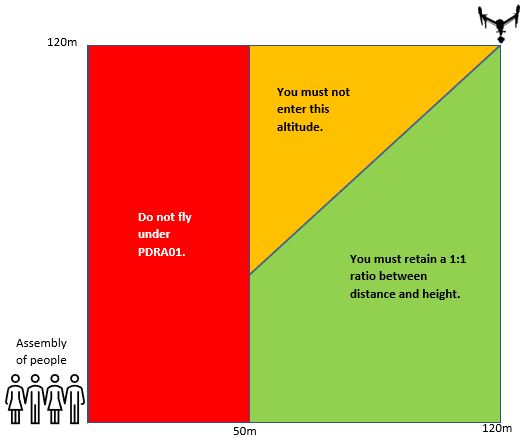
PDRA01 1 to1 Rule. 50m plus from Assemblies of People
Step 6 UAS Technical Specifications
There is now a requirement to include a pretty detailed technical breakdown of each UAS you plan to use. My understanding is that you can still add UAS during the year without renewing your OM through the CAA. However, I would strongly advise that before flying a new drone under your manual, that you insert the appropriate technical specification sheet.
My advice is to gather together technical specification sheets (compliant with the format in CAP722H) and to insert them into a schedule or appendix at the end of your manual.
Further advice is not to agonise over producing these technical specification unless you are operating an unusual platform. That wonderful Dorian Ellis over at www.dronedesk.io may well have done the work for you. The man deserves a medal!
You can find his technical specification page here.
Step 7 Risk Assessment
Unfortunately, the risk assessment provided in version 1 of CAP722H leaves a lot to be desired. There is some contradictory information within it which may limit your operations when compared to the stated Limitations and Conditions of the PDRA01 itself (see Step 8).
The other issue is the layout. The RA uses a “mitigation by numbers” approach, which makes it difficult to interpret and use.
However, oddly, it appears that the CAA does NOT expect you to include the RA as part of your operations manual
I would recommend that you read and understand the mitigation list at the end of CAP722. If you find one you are uncertain about then you need to try to understand it and ensure it is reflected somewhere in your manual.
Don’t just insert it into your manual and forget it. THIS IS THE SET OF MITIGATIONS YOU ARE AGREEING TO WORK AGAINST. Failure to do so could cause you serious problems in the event of an incident and may lead to withdrawal of your operational authorisation, or worse.
Rather than clutter this blog with the RA, I would suggest you check out CAP722H itself. When an acceptable version of the RA is finally released, I hope to create a version of the RA that is more accessible and will add a link in here. Watch this space.
Step 8 Optional but Recommended – Helicopter Landing Sites
Following an email released by the CAA last during 2022, within my Abbreviations and Definitions at the beginning of my OM, I have added an abbreviation of HLS for Helicopter Landing Site and defined it as any helicopter operating site indicated on the Altitude Angel UAS DroneSafetyMap. I have linked to the map and so can you.
I have then dropped into Pre-Notifications and Permissions (or the closest heading you have) and written:
“The Remote Pilot should consider the risks posed by flights within 1km of an HLS and the RP may raise a NOTAM via the NOTAM Portal The radius of the NOTAM should be given as 1km.”
Note the words “should” and “may”. The word should means that you require good justification if you fail to do something, such as considering the risks posed by a HLS. Having considered those risks you “may” raise a NOTAM. “May” in this case leaves the NOTAM to the RPs discretion. It could be that you have been called out very quickly to a task and there is insufficient time to raise a meaningful NOTAM, or you may know an area very well and have an understanding with the HLS operators. It’s big person pants time here so I’ll leave it in your hands.
I chose 1km as the distance as this matches the smallest radius for which a NOTAM can be raised and therefore I am using this (in the absence of any figure from the CAA) as the definition of “in the vicinity”.
Step 9 Manual Overview
It is worth checking the following sections of your manual to ensure the following details are covered. It is possible that an assessor will require you to input the details behind these sections. If I receive feedback that this is happening then I will provide the details here. But in the meantime here is the bare minimum:
Roles and responsibilities:
The UAS Operator (the holder of the Operator ID) must comply with the responsibilities set out in UAS.SPEC.050 of Regulation EU 2019/947 which are:
- The UAS operator shall Designate a remote pilot for each operation
- Ensure that all operations effectively use and support the efficient use of radio spectrum in order to avoid harmful interference;
- Ensure that before conducting operations, remote pilots comply with all of the following conditions:
- Have the competency to perform their tasks
- Obtain updated information relevant to the intended operation about any flight restriction zones, restricted areas, danger areas or other legitimate UAS flight restrictions.;
- Ensure that personnel in charge of duties essential to the UAS operation, other than the remote pilot itself, comply with all of the following conditions:
- have completed the on-the-job-training developed by the operator;
- have been informed about the UAS operator’s operations manual
- have obtained updated information relevant to the intended operation about any flight restriction zones, restricted areas, danger areas or other legitimate UAS flight restrictions.
- carry out each operation within the limitations, conditions, and mitigation measures defined in the declaration or specified in the operational authorisation;
- keep a record of the information on UAS operations for the period indicated in the Operational Authorisation.
- maintain the UAS in a suitable condition for safe operation by:
- maintaining the UAS in accordance with the manufacturer’s recommendations
- Keep a record of all maintenance activity for a minimum period of 3 years and make such records available to the CAA on request.
Step 10 Everything Else!
I hate to do this, but this is new to us operators and new to the freshly trained team at the CAA. It is likely we will see even more poor or inconsistent decisions as assessors are “marking” PDRA01 manuals against the CAP722A Volume 1 template which is designed for every type of operation up to very complex BVLOS delivery services. This leaves a huge opportunity for proportionality to be misunderstood. The accuracy of weather forecasts (for example) cannot be as critical for a VLOS operation (so always within 500m) as they are for a drone being flown across a couple of counties. But I’m afraid these are some of the queries we are already starting to witness.
This section covers items which may have been stripped from your manual by well-meaning manual update service providers. In some cases it may cover sections which you’ve never had in your manual.
So here we go:
Maintenance
You need a short statement (longer if you are using more complex platforms) detailing how you will approach maintenance. This seems to have confused a lot of operators as most ready to fly platforms are “maintenance free”. Wrong. Updating your firmware is maintenance. It also pays to have a periodic (by elapsed time or flight hours depending on your usage) “scheduled maintenance session”. This is where you examine the UAS closely under good lighting conditions away from the stress of a working site. Then you check the sensors for calibration, clean where necessary and have a specific test flight. Write it up how you want, but create for yourself a simple maintenance log. This should include the date, platform, UAS number (if applicable), Type of maintenance session, comments, date of next maintenance. That should do it.
The process will have to slide into your main manual. I would suggest in the Safety Management section early in the manual.
It’s strange that for an issue the regulator has decided to reject manual on, they haven’t included a specific section in CAP722A.
Firmware
Linked to Maintenance. There is a specific requirement within CAP722H to “monitor firmware releases from the manufacturer”. A good way to do this is to register on the relevant manufacturer’s forum (assuming they have one) or any other update service. Most UAS will also alert the remote pilot to available updates when the UA is connected to its controller, display device and the internet.
Possible wording once an update is identified may be:
DRONE COMPANY LTD will review firmware updates and either:
- Implement immediately if informed by the manufacturer or the CAA that they are a safety related update or,
- Leave an appropriate period of time to assess from other users if the update is considered stable on the platform.
When firmware is updated, the UA Operator will follow the manufacturer’s instructions to carry out the update, record the update in the Maintenance Log and test the flight and display operations in a clear flight area prior to any use in a congested area.
Logs and Records
The CAA is requiring both pilot hours (against each UAS on your operations manual) and logs of maintenance carried out on each UAS (in accordance with the manufacturer’s recommendations. They will expect your operations manual to cover this and the simplest way is to insert a “Logs and Records” section if you don’t already have one.
This should detail the logs and records you maintain and ideally, point to the examples you have in your appendices. Rather than you having to look up the records required under the regulations, here they are for you (correct at CAP1789A version 7).
For each remote pilot you must record:
Relevant qualifications/training courses completed by the remote pilot and other personnel in charge of duties essential to the UAS operation.
For each UAS you must record:
The maintenance activities conducted on the UAS.
In addition, you should record:
Information on UAS operations including locations, surveys, risk assessments, any unusual technical or operational occurrences (incidents).
Note that many smaller UAS have no particular specific maintenance procedures. For these, I would recommend a functional check and thorough mechanical inspection under good light completely separately to your operational pre/post-flight checks. How often this should be will depend on how hard you use your kit and the environments you use it. More often for dirtier/higher risk use. As a rule of thumb, start with 50 flight hours and work up or down from there.
Emergency Procedures
You need emergency procedures to cover the following as a minimum. The one about abnormal environmental conditions may be missing from some manuals as it is being picked up the assessors: Think about what you’ll do if there is a rain shower, sudden wind gusts or increased wind speed or low temperatures (affecting battery and crew performance).
Fire
Flyaway
Pilot incapacitation
Abnormal Environmental Conditions and C2 Link Loss (see below)
Airspace Incursion
Loss of Separation Distances to uninvolved third parties (emergency landing procedures). This one appears to replace the concept of Accidental or Malicious Ground Incursion but I could be wrong. If I’m correct, a simple rename of your current EP will suffice.
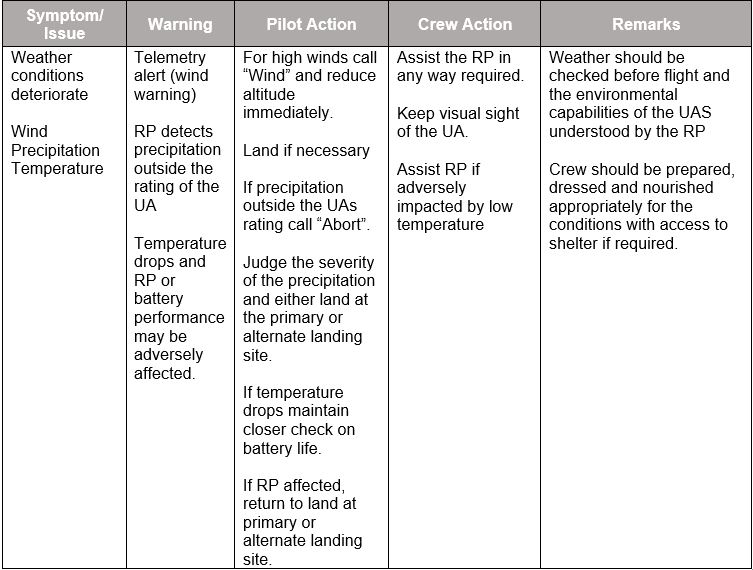
Abnormal Environmental Conditions Emergency Procedure
Flight Procedures, Pre and Post-Flight Procedures
Operators are already being pulled up on flight procedures that the CAA consider to be insufficiently detailed. Without knowing every manual, it is not possible here to point out what you may need to concentrate on. My suggestion is that you run through CAP722A sections 1.4.10 to 1.4.13. Check carefully against each and every requirement in these sections and ensure they can be found covered in your manual. Some may be part of the procedures and some may appear in your appendices.
“Weather”
You probably have two “Weather” sections in your manual at the moment. One will be earlier on, where you are checking weather prior to the operation. The other will be in the operational section where you are checking before you fly.
If you have this second section and it is called “Weather”, then it may be best to change the title to “Assessment of Environmental Conditions”. I believe this is to change the emphasis from a mere checking of the weather, to an assessment in relation to what you are about to do (fly a drone in a specific flight environment) and the equipment you are about to do it with (and that equipment’s capabilities.
In CAP722A, there appears to be a push towards the Met Office Aviation briefing Service. The CAA claims that “All regulated products are available free of charge via the Met Office Aviation Briefing Service”. In fact, this is not true for commercial users, who are charged £57.60 per annum.
Whether this level of forecast accuracy for UAS which are being operated within VLOS is proportional is a question I will leave to individual operators. I can’t help thinking that although these may be absolutely appropriate for true BVLOS operations, there is no better gauge of real weather conditions than the person on the spot, able to gauge exactly how their UA is performing and whether it is about to pour with rain or not.
Methods to determine the feasibility of the intended operation
The CAA appears to be picking up on the level of detail provided on airspace access procedures. It is insufficient to state that you will determine whether the flight operation falls within a FRZ or restricted area. Ensure you state the source of your information, the recommended one being:
NATS UK | UAS Restriction Zones (ead-it.com)
The situation is similar for procedures for landowners permissions. We must now “Detail the procedures describing how the landowner’s permission to conduct the intended operation are obtained”. This is why I love taking off from a roof!
Guarantee
There isn’t one!
I offer NO GUARANTEE that any manual updated to these instructions will be accepted by the CAA. It’s your manual and you need to understand not only your procedures but the law surrounding them. Do that and you’re halfway there!
However, if you have found this useful, I would be delighted to receive your comments. Is it easy to use? A pain in the arse? Impossible to understand? Email me at info@eyeup.camera and let me know…I welcome constructive criticism, alerts of typos etc. I do guarantee that I respond more positively and faster than our dear regulator. But then Eyeup is just me and I have no legal department to answer to.
If you need some tricky work doing that even an A2CofC can’t help you with and you’re in the South of the UK then hit me up. I can fly legally at heights you won’t get away with even with some of the relaxations. And I can operate proper sized drones in built up areas at very reduced clearances too. Same email address applies. I can even help you towards similar exemptions!
Graham Degg
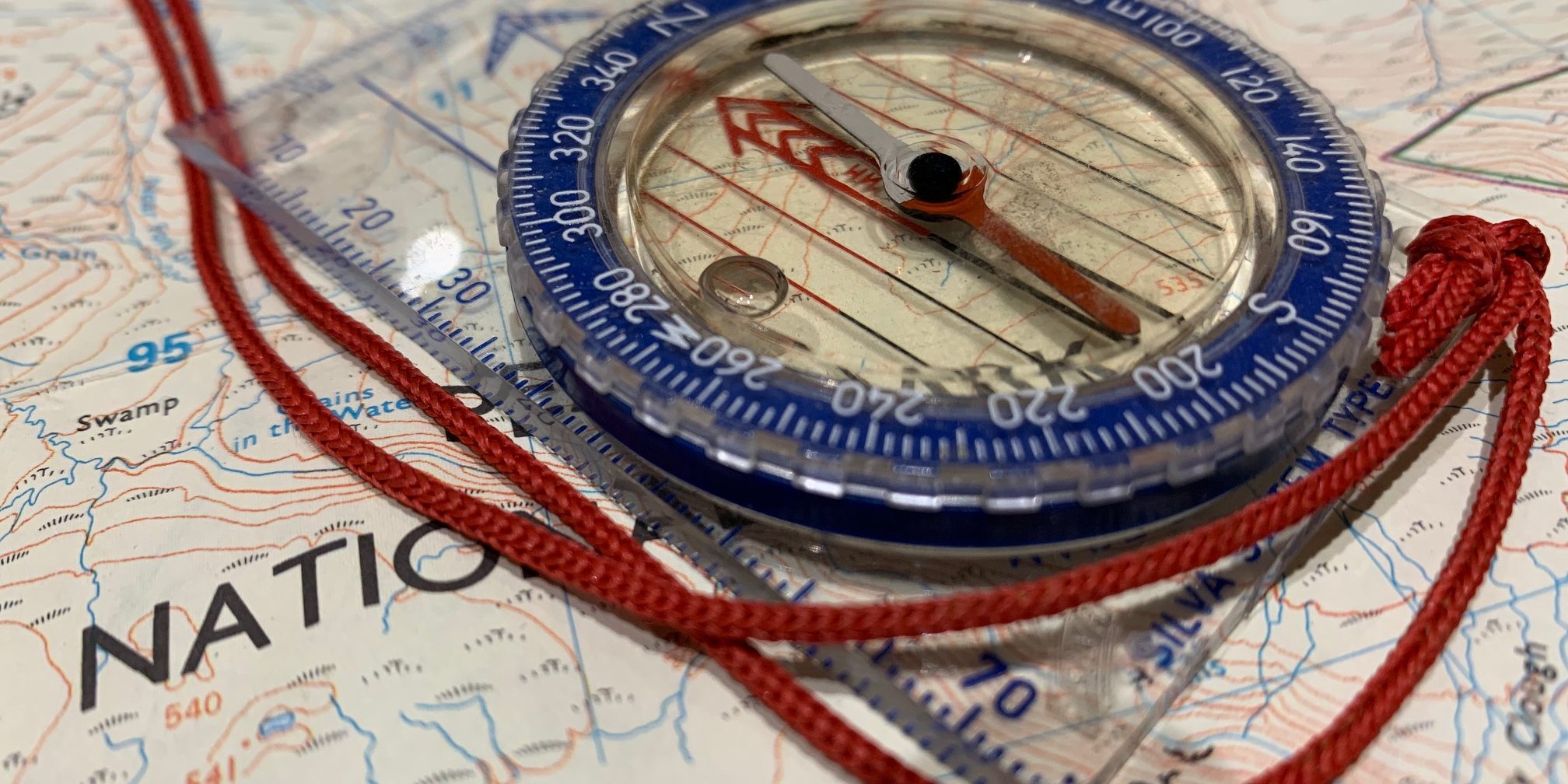
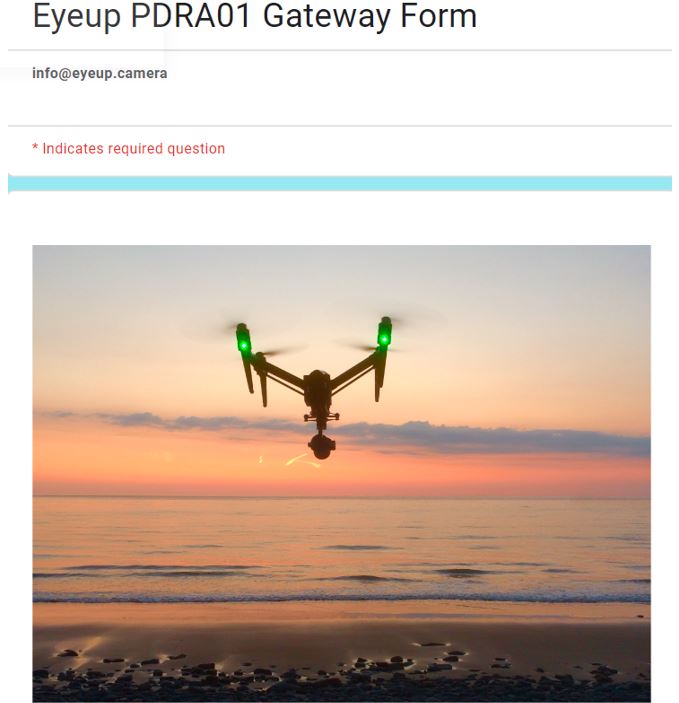






Graham,
This is an advisory that the CAA sent while granting my OA yesterday (21 Jul 23).
It seems that each year the online CAA application form throws up new surprises and complexities – refuses to upload files – and often forces the user to start inputting the data again and again.
From pressing send to getting the authorisation e-mail back took 26 hours. Though the CAA do give a slight priority to blue light applications – it’s never been that quick in the past.
This is their advisory observation which hopefully will help you develop your guide/template and help others in their application:
Advisory :
Please expand the scenario of Abnormal Environment Conditions wit in your Emergency procedures
Remote pilot should consider environmental factors that may increase the chance of a loss of control. For instance:
-emergency procedure if there is a precipitation not expected which may suddenly prevent the UA from operating safely
-emergency procedure if the wind picks up and there are some turbulences which could affect the remote pilot’s ability to control the aircraft precisely and increase its power consumption
-emergency procedure should there be a decrease in the temperature which could reduce battery performance and affect the performance of the crew
The type of example situations we would expect to see details for can be found in CAP 722A, Section 1.4.14.
You are probably already aware of the above – offered to you just in case you’ve not seen this response before.
Hope this helps – and thank you Graham for all the help you provide.
David
With sincere apologies for the delayed reply David. I’ve made sure there is a sample emergency procedure added to the blog covering just this.
If you are involved in updating for your next renewal, and your manual isn’t too different to a “standard PDRA01” OM, then I may be able to help. Even if it is full of “Blue Light specials”, I should be able to help.
An excellent article, which I have found very useful. Thanks very much. Whilst I would possibly be interested in an Ops Manual review, I agree with your comment that I should be doing it myself, but the help I need is more with producing/ formatting the document itself rather than the actual information.
Cheers
Hi Paul, Sorry for the delayed response. I know myself how hard it is to get a manual together from scratch, or even from the CAP722A template. The bunch of documents released last December have made things even more difficult. I had 3 screens on the go just to create the update blog! If you are still struggling with your manual I am in the process of “soft launching” what is possibly the best template out there. It is balanced in its approach while at the same time it should tick all of the CAA boxes. Please reach out directly via info@eyeup.camera as there will be a limited time offer on the manual generation and update service, making it cost effective – as well as extremely well written.